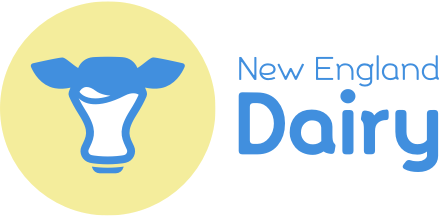
Amid the COVID-19 pandemic, farmers across the U.S. are maintaining a steady food supply. Demand for dairy products has dropped by 10 percent, according to dairy economists. Even though more people are buying dairy at the grocery store this is not the full picture. Dairy products are no longer being sold at the levels they were through food service, schools, and exports. That means processors and distributors are adjusting quickly to the changing marketplace. They are working to ensure that food is getting where it needs to go while minimizing waste.
In 2018, Americans spent $1.7 trillion on food; 54% of that spending happened away from home at food service establishments. With restaurants closed and sales down, consumers are almost exclusively buying food at grocery stores which has triggered panic buying, empty shelves, and buying limits on products in high demand.
The Dairy Industry Situation
Restaurants, schools, and exports are critical markets for dairy. Approximately half of all milk produced in New England is turned into products for food service and schools, and exports account for an additional 15% of the national milk market. Although milk sales and demand have increased in grocery stores, dairy farmers are suffering the brunt of restaurant and school closures and halts in export markets.
Milk Shortage Rumors
There is not a milk shortage. Milk processing plants throughout New England are working at maximum capacity to ensure that milk and other products are available for grocery stores.
Demand for fluid milk at retail is high. However, processing plants that produce commodities like sour cream and yogurt are unable to switch and begin processing fluid milk because they do not have the machinery or infrastructure for that type of processing.
Wherever possible, dairy processing plants that typically package products in bulk (i.e. 40-pound blocks of cheese and 5-pound tubs of butter) are shifting their operations to family-sized packaging in response to shifting demands in the market. As the supply chain catches up to meet increased demand in grocery stores, consumers can expect to see dairy more readily available in the coming weeks.
Why Farmers Dump Milk
While demand and sales at retail have increased, it’s not enough to offset the loss of sales in schools, exports, and food service. Milk that normally goes to a plant to be processed into pints of school milk or bulk tubs of sour cream for restaurants now needs a home.
With milk plants already at maximum capacity, they have no room to process more milk or to store the perishable product. With no place for this now surplus milk to go, some farms and co-ops have started dumping milk. This is frustrating for consumers who see empty dairy shelves at their grocery stores, and it’s heartbreaking for dairy farmers to see the milk that they work so hard to produce go to waste.
Impact on Dairy Farmers
Despite struggles within the market and falling milk prices, dairy farmers and their co-ops continue to meet the needs of their communities by innovating new strategies to deliver their high-quality products. Mountain Dairy in Storrs, Connecticut started their home delivery service again after several years to help customers adhere to social distancing guidelines, and other dairy farms throughout the region continue to provide home delivery service. Barstow’s Longview Farm in Hadley, MA has a drive-thru window at their dairy store and bakery open daily for grocery items and prepared foods. The dairy farm families of Cabot Creamery are donating single-serve cheese to hospitals for doctors, nurses, and staff.
As supply at grocery stores and retail locations stabilize, we can continue to support our dairy farmers by purchasing milk, cheese, and other dairy products to nourish ourselves and our families.



